If you’re starting in skateboarding, learning how to push on a skateboard is the first step to mastering the basics. It’s the foundation for everything else you’ll do on a skateboard.
In this guide, I will break it down into simple, easy-to-follow steps so you can start skating with confidence. So, Let’s dive into the skateboarding world!
What Does It Mean to Push on a Skateboard?
Pushing a skateboard is the primary motion that propels you forward. It’s how skaters gain momentum by using their back foot to kick off the ground.
While their front foot stays on the deck for balance and control, it’s the starting point for everything from cruising to learning tricks.
A proper push involves smooth, controlled movements, good foot positioning, and balance. It’s not just about moving forward, but it’s about gliding with stability and confidence.
Step-by-Step Guide to Push on a Skateboard
Ready to ride your skateboarding journey? Let’s follow these steps to build your confidence and start riding like a pro!
1. Find Your Stance
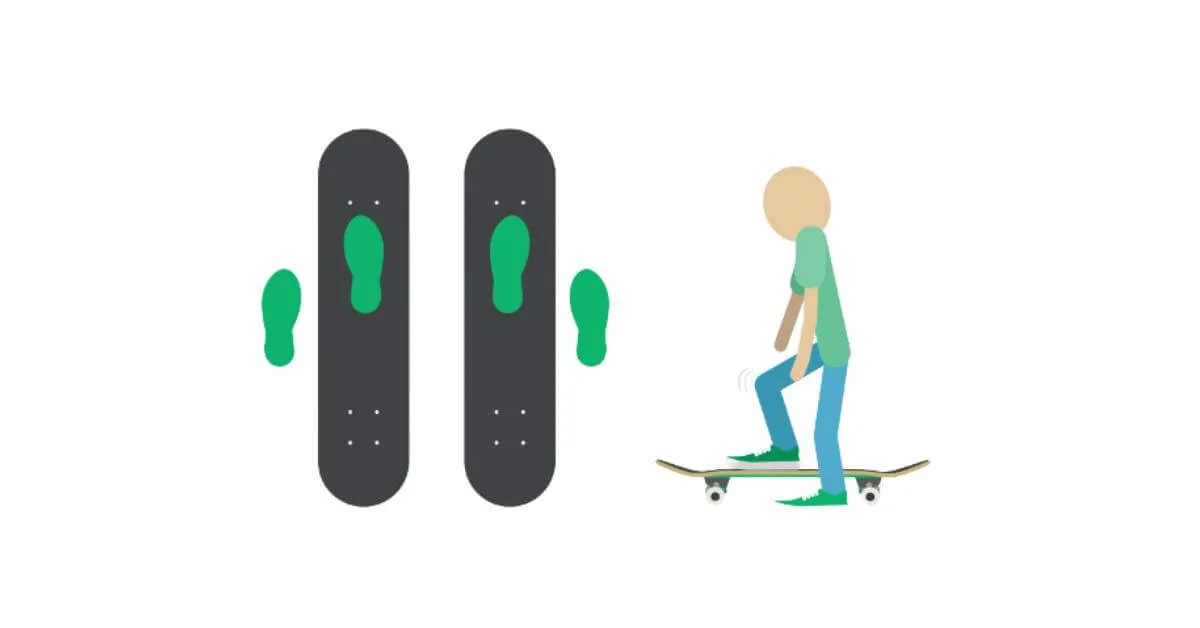
Before you can push, you need to figure out your stance. Skaters usually fall into one of two categories:
- Regular stance: Left foot forward, right foot used for pushing.
- Goofy stance: Right foot forward, left foot used for pushing.
If you’re not sure which stance is right for you, stand naturally and have someone push you gently from behind. The foot you use to catch yourself will likely be your front foot.
2. Position Your Front Foot
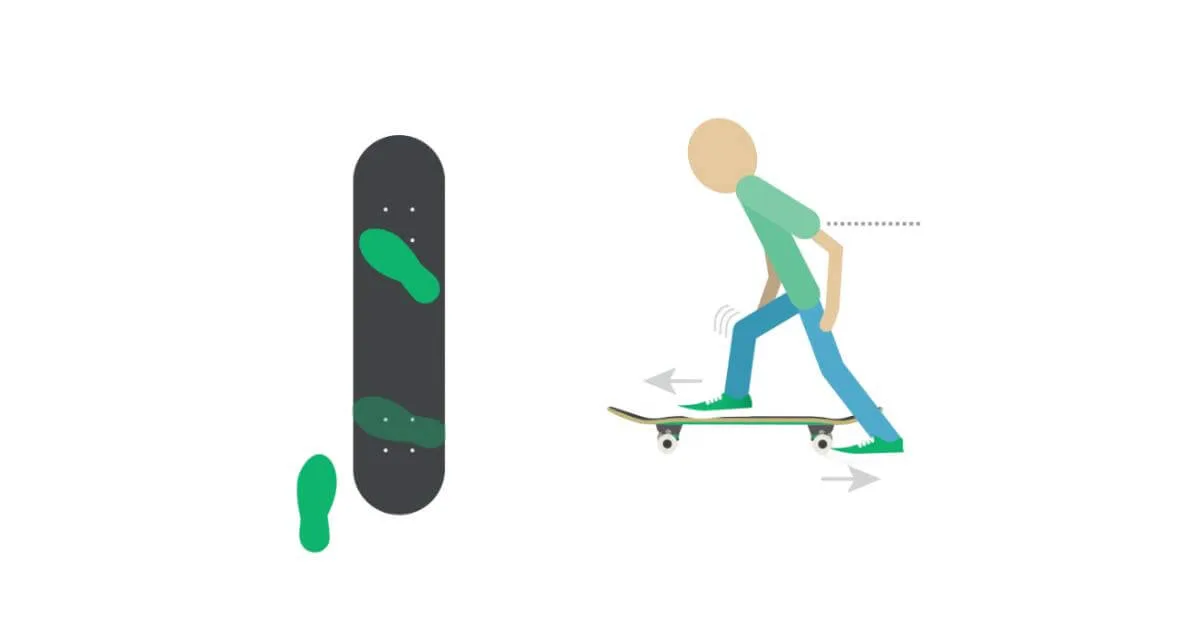
Getting your front foot placement right is crucial for stability while learning to push on a skateboard. Here’s how to position it properly:
- Place your front foot near the front bolts of the skateboard deck.
- Angle your foot slightly (about 45 degrees). As a result, you have better control and balance.
- Keep your weight centered over the board to avoid tipping over.
3. Use Your Back Foot to Push
Mastering the use of your back foot is essential for gaining smooth and consistent speed while pushing. Here’s how:
- Take your back foot off the board and place it on the ground.
- Bend your knees slightly for stability and balance.
- Push off the ground with your back foot in a smooth, controlled motion. Short, gentle pushes work best for beginners.
4. Glide and Balance
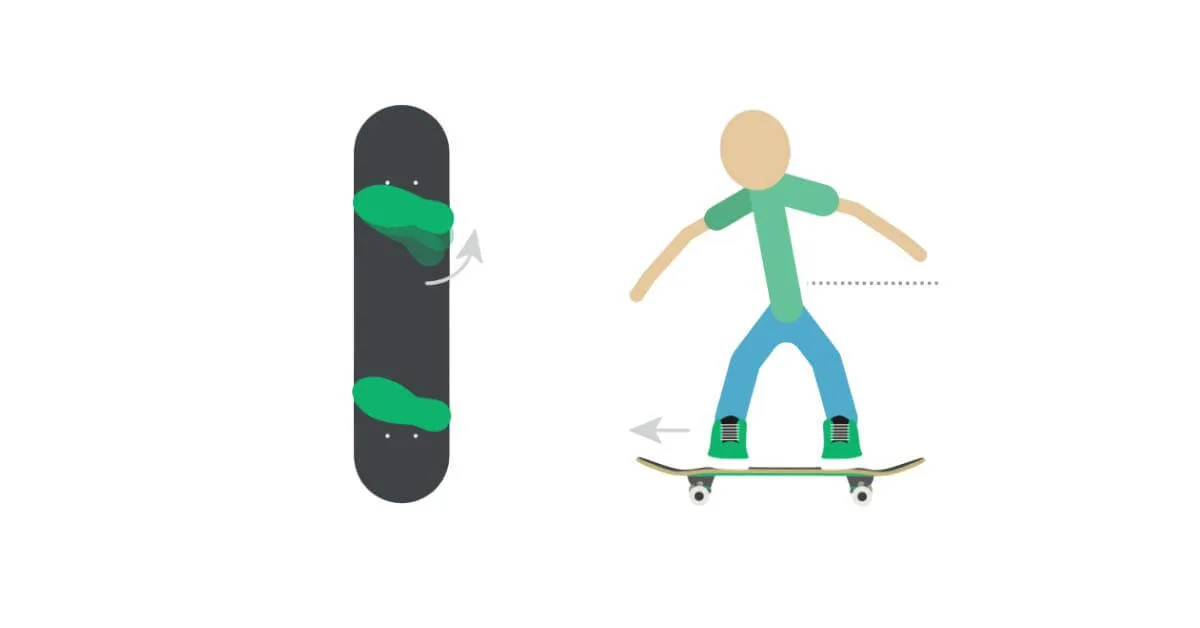
Once you’ve gained momentum, lift your back foot off the ground. Place it on the skateboard near the back bolts, perpendicular to the deck. Adjust your front foot to face more forward for better stability while riding.
Remember, always focus on where you’re going, not at your feet.
5. Practice Steering
Steering your skateboard is all about subtle weight shifts. Lean gently onto your toes to turn in one direction or your heels to turn the other. Keep your knees bent and weight-centered to avoid oversteering.
Practice slight turns on a flat surface before attempting sharper curves. Keep your movements smooth to maintain balance as you ride.
Common Mistakes to Avoid
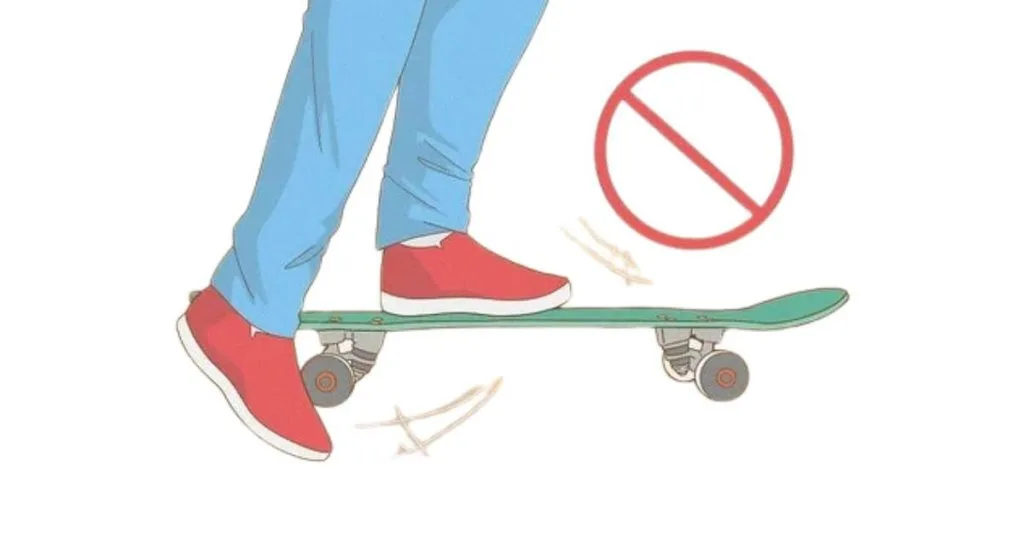
Even experienced skaters had to work through some common beginner mistakes. Here’s what to watch out for when you’re learning to push a skateboard:
- Incorrect Foot Placement: Don’t place your front foot too far forward or backward. This makes it harder to balance.
- Over-pushing: Short controlled pushes are better than long. Forceful ones, which can throw you off balance.
- Looking Down: Keep your head up and your eyes forward to maintain balance and avoid obstacles.
- Avoid Pushing Mongo: Pushing Mongo means using your front foot to push instead of your back foot. While some skaters prefer this style, it can make transitioning to tricks more challenging later on. So, don’t try at your beginner’s level.
Tips for Beginners to Push a Skateboard
If you want to get comfortable with pushing, try these tips:
- Start on Smooth Surfaces: Practice on a flat or in a parking lot to avoid bumps and cracks.
- Wear Protective Gear: Always use safety gear like helmets, knee pads, and elbow pads.
- Practice Balancing First: Stand still on the board to get used to balancing before attempting to push.
- Stay Relaxed: Keep your knees bent and your body loose. Tension makes it harder to balance.
Related Article: How to Get Better at Skateboarding for Beginners!
Advanced Techniques to Push Better Like a Pro
Once you’ve mastered the basics, here are some ways to refine your pushing technique:
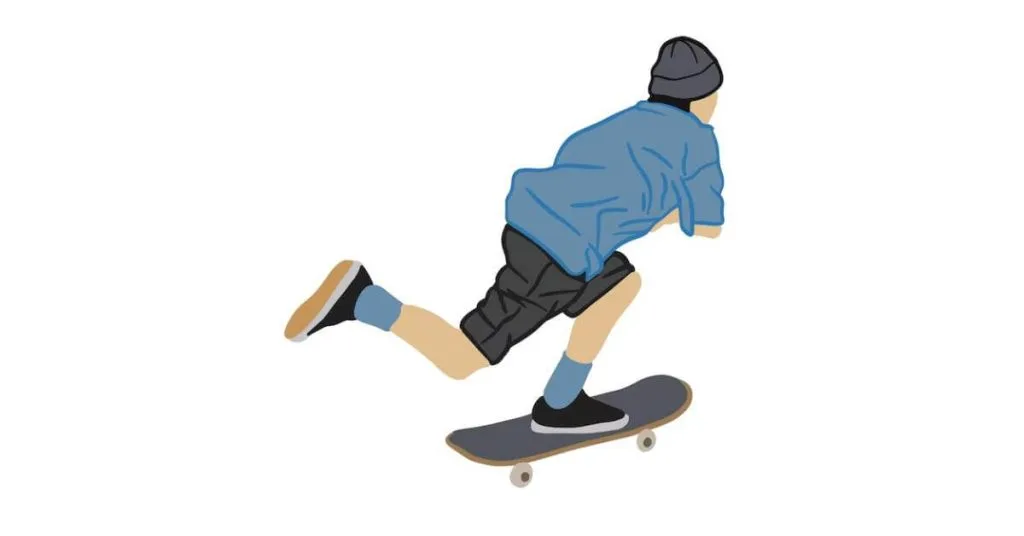
- Focus on Posture: Keep your back straight and shoulders relaxed for better control.
- Improve Speed Control: Start with slow pushes and gradually increase your speed as you gain confidence.
- Learn to Pump: Pumping is a technique where you shift your weight to maintain speed without pushing. This skill comes in handy for cruising and riding ramps.
Frequently Asked Questions (FAQs) For How to Push on a Skateboard
How long does it take to learn how to push on a skateboard?
Most beginners can learn to push a skateboard within a few practice sessions. The key is consistency and staying patient as you build your balance and coordination.
Can you push a skateboard with either foot?
Technically, yes. However, most skaters use their back foot for pushing and keep their front foot on the deck for balance. Avoid “pushing mongo” unless it feels completely natural to you.
What’s the best surface for practicing?
Smooth, flat surfaces like driveways, parking lots, or skate parks are ideal for learning to push on a skateboard.
Wrapping Up
Hope you understand how to push a skateboard. It is your gateway to the exciting world of skateboarding. By focusing on balance, foot placement, and smooth motions, you’ll gain the confidence to ride with ease.
Remember, practice makes perfect, so don’t rush the process. Start slow, focus on your balance, and enjoy the process.
Now grab your skateboard, hit the pavement, and start pushing your way to skateboarding success!

















